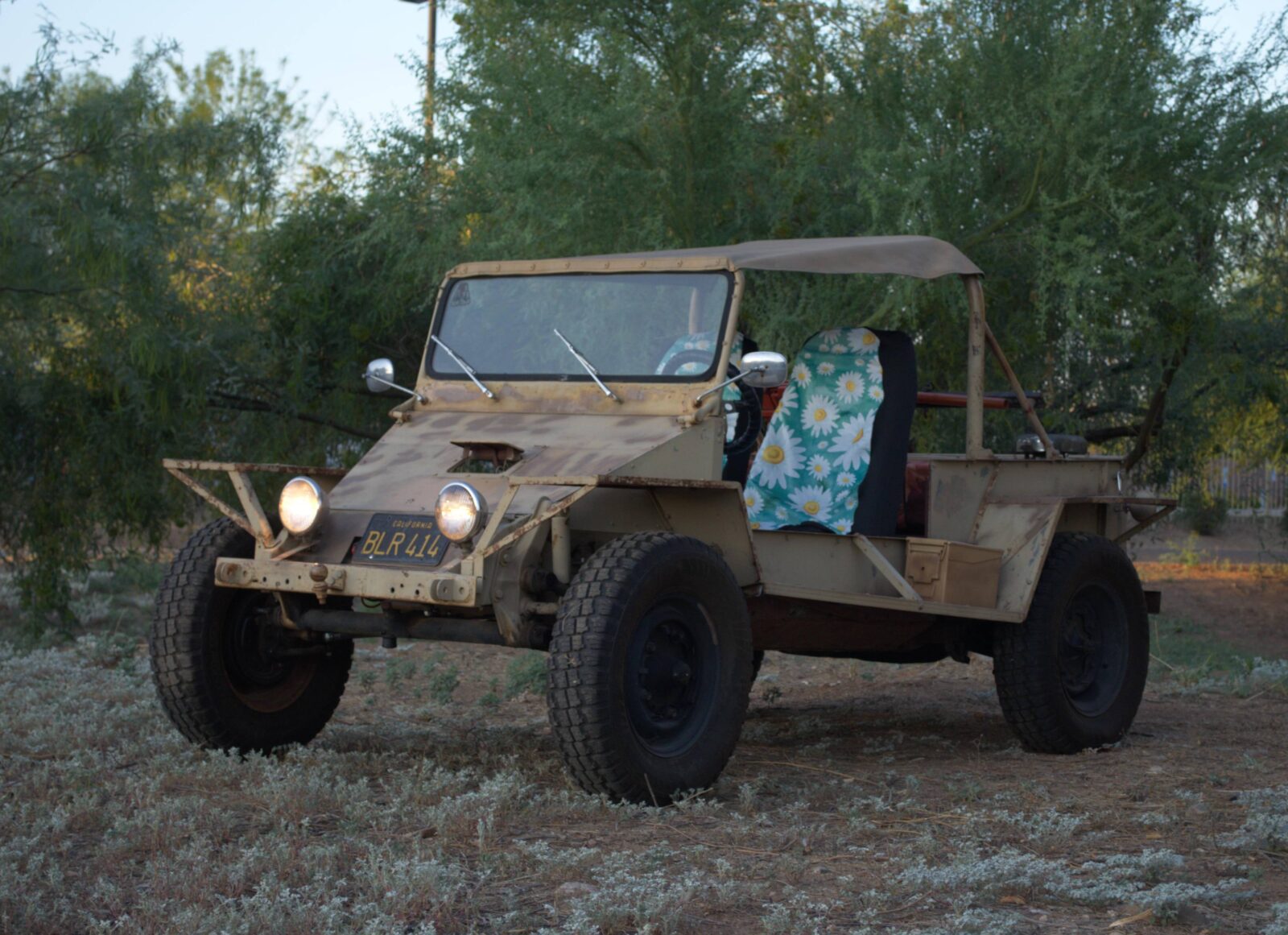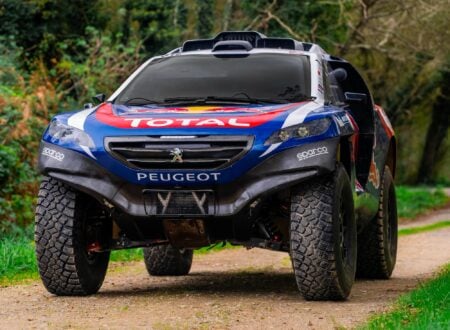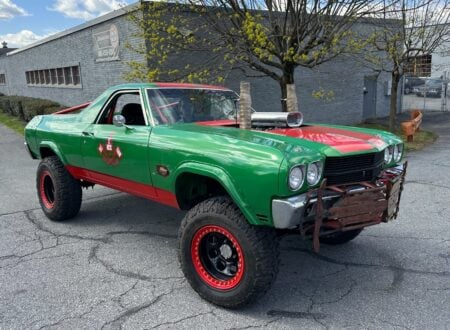This is the 1957 Volkswagen General Purpose Buggy, it’s believed to be the only one of its kind ever made, and it was built not in Germany but thousands of miles away in California.
This unusual (street-legal) off-roader rides on portal axles and suspension from a 1956/57 VW Type 2 Van – giving it much higher ground clearance that the more common Type 1 Beetle suspension that was commonly used on buggies at the time.
Fast Facts: The Volkswagen General Purpose Buggy
- The 1957 Volkswagen General Purpose Buggy is a one-off off-roader built in California using portal axles and suspension from a VW Type 2 Van. Its high ground clearance and custom steel body made it far more capable off-road than the typical Beetle-based buggies of its time.
- Before fiberglass kits became common, early dune buggies were home-built by removing VW Beetle bodies and modifying the chassis. Builders like Pete Beiring and Daniel Rettig pioneered this backyard buggy culture in the 1950s, laying the foundation for the dune buggy boom.
- EMPI’s 1960 Sportster kit was the first commercially available VW-based buggy. Made from flat steel panels, it resembled a primitive Jeep and was designed to be assembled on a shortened VW floorpan. Only 231 were built by 1964, and few survive due to rust and saltwater use.
- Bruce Meyers’ “Old Red” was a fiberglass monocoque buggy built in 1963 that changed everything. It was lighter, stiffer, and faster, beating the Baja record and setting the standard. Later Meyers Manx kits used fiberglass bodies on shortened Beetle pans, making the design easier to produce and widely adopted.
The Early Days Of VW Dune Buggies
Long before fiberglass bodies became the standard for VW-based dune buggies, early off-road tinkerers were already cutting up Volkswagen Beetles and rebuilding them into sand-capable off-roaders. These homebuilt creations – rough, functional, and often bizarre – laid the groundwork for what would become a defining American automotive subculture.
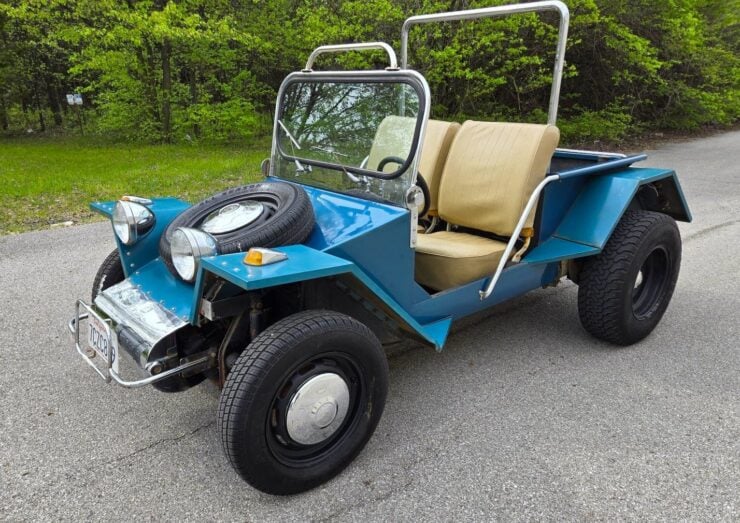

In the late 1950s, homebuilders began removing the heavy steel bodywork from VW Beetles and modifying/shortening their pans for off-road use. One notable early example was Pete Beiring, who in 1958 stripped down a Beetle and ran it along the dunes of Oceano, California.
Others, like Daniel Rettig, constructed crude buggies on shortened Beetle frames long before any kits were available. These early machines were typically cobbled together in garages or backyards and relied heavily on the Beetle’s lightweight platform chassis, and rear-engine layout which kept the weight over the driven rear wheels – ideal for use in soft sand.
Seeing the potential in this growing underground scene, EMPI – Engineered Motor Products Inc, based in Riverside, California – introduced the Sportster in 1960. Unlike the fiberglass-bodied buggies that would come later, the Sportster used flat steel panels and was sold as a kit to be built atop a shortened VW floorpan.
The EMPI Sportster was crude but effective, and it was highly capable off-road thanks to its low weight, low center of gravity, and rear weight bias.
The Sportster looked somewhat like a spartan Jeep-meets-buggy hybrid, with an upright windshield and no-nonsense flat body lines. It was more primitive than what would come later, but it offered structure, an assembly manual, and it could be bolted together with hand tools.
Only approximately 231 examples had been built by 1964, and only a tiny fraction of this number have survived to the current day due to their all-steel construction and the fact that so many of them were taken for regular drives in salt water.
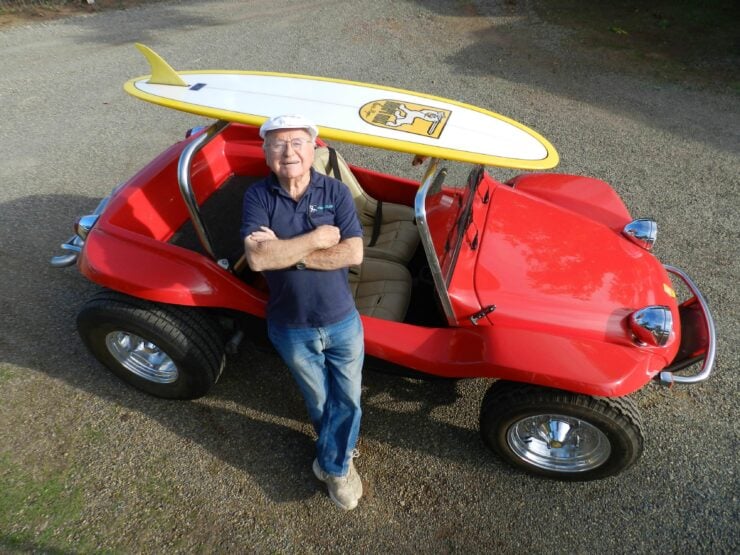

Meanwhile, Bruce Meyers was quietly working on a different solution. A surfer, fiberglass boatbuilder, and ex-Navy man, Meyers saw the shortcomings of steel-bodied buggies like the Sportster. He realized that a lighter fiberglass tub would better float over sand, reduce labor, and appeal to the growing Southern California dune crowd.
In 1963–1964, he built his prototype named “Old Red” in a Newport Beach garage. Bruce took a revolutionary approach that was decades ahead of its time – he developed a load-bearing fiberglass monocoque body, onto which the VW engine and suspension were attached.
This resulted in a rigid, lightweight dune buggy that was better than almost anything else on the dunes. Meyers and Ted Mangels used Old Red to break the existing record from Tijuana to La Paz. They completed the 952 mile Baja run in 34 hours 45 minutes, shaving over five hours off the previous record held by Dave Ekins and Billy Robertson Jr. on a pair of Honda motorcycles.
It was extremely light and innovative, but also expensive and time-consuming to produce. Only about 12 monocoque Manxes were built before Meyers shifted to a more practical design that used a shortened VW Beetle floorpan.
The production Meyers Manx kits sold from 1965 onward were not monocoques, they were fiberglass bodies designed to be mounted on shortened Beetle chassis. This change allowed for easier production, reduced costs, and wider compatibility with donor cars, helping the Manx rapidly reach icon status.
Amazingly, it’s still today possible to buy yourself a brand new, authentic Meyers Manx kit and build yourself a dune buggy in your garage.
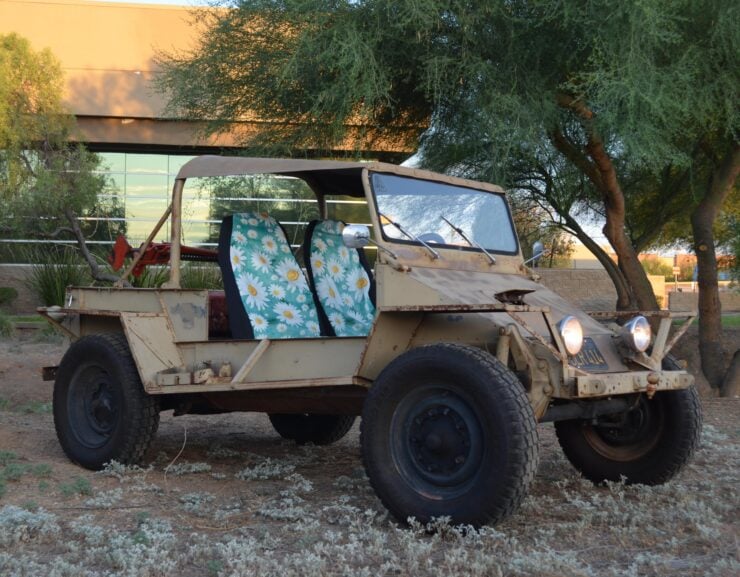

Before the Manx became ubiquitous, and even a little afterwards, many home builders rolled up their sleeves and built their own dune buggies on shortened Beetle chassis, with varying degrees of success and competence.
Much as with the EMPI Sportsters, very few of these home-built buggies still exist today as they were so prone to rust, and most were neglected or just sent to scrapyards.
The Volkswagen General Purpose Buggy
The exact early history of this wild-looking dune buggy has been lost, what is known is that it was built sometime in 1957 or a little later. It’s based on VW components, but unusually it uses the portal axles and suspension from a 1956/57 Volkswagen Type 2 Van.
This suspension gives the buggy much higher ground clearance than usual, helping further improve its off-road ability. It has a custom built and welded chassis and body from sheet steel and tubing, with an upright windshield, a roll bar, front and rear fenders, a rear cargo area, and a removable soft top for sun protection.
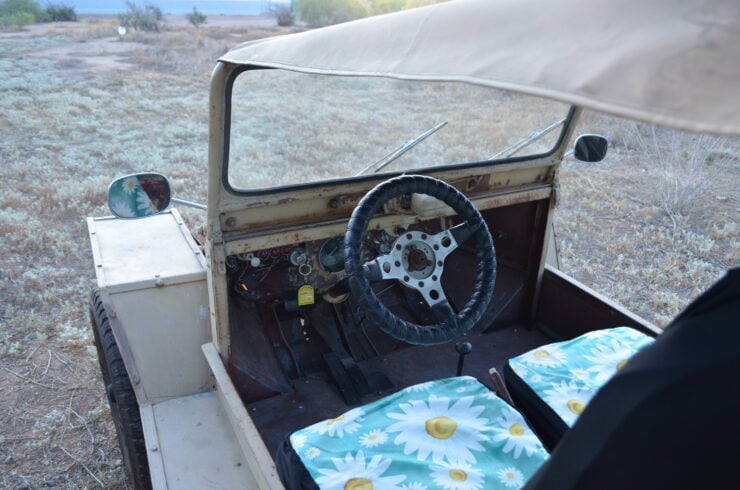

It was bought more recently in Southern California and recommissioned by a Porsche Marque specialist with considerable international off-roading experience. It’s now being offered for sale as the only known example of its kind.
Known as the Volkswagen General Purpose Buggy, this vehicle is now due to roll across the auction block with Bonhams in mid-August with a price guide of just $8,000 – $12,000 USD. If you’d like to read more about it or place a bid you can visit the listing here.
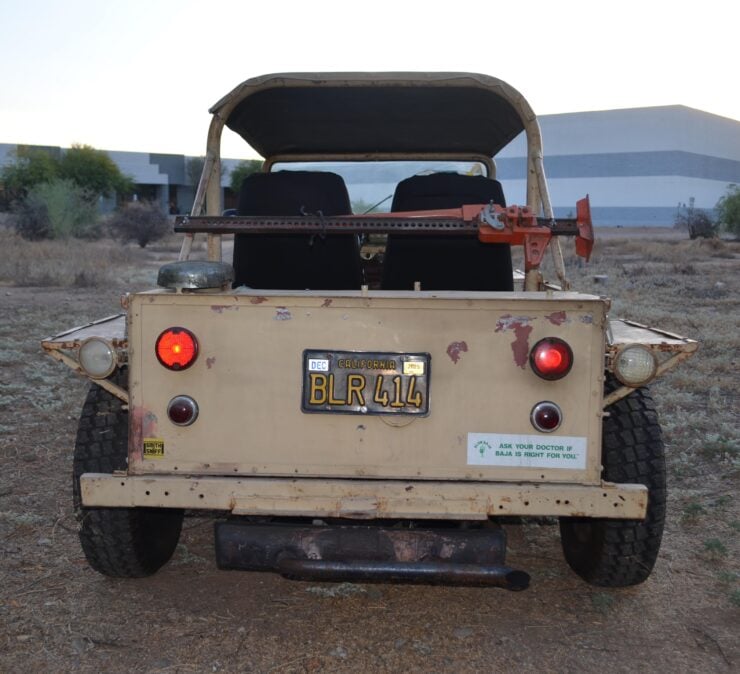
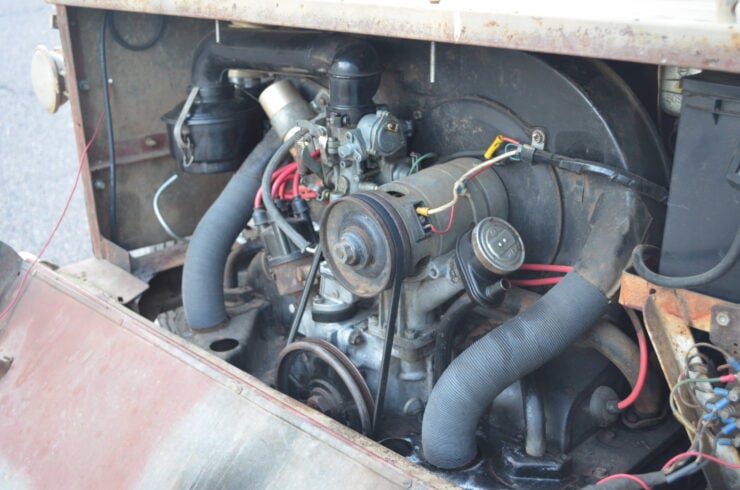
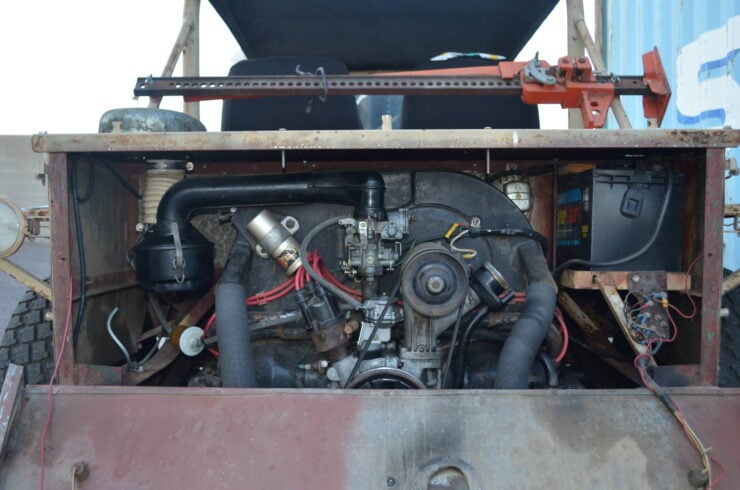
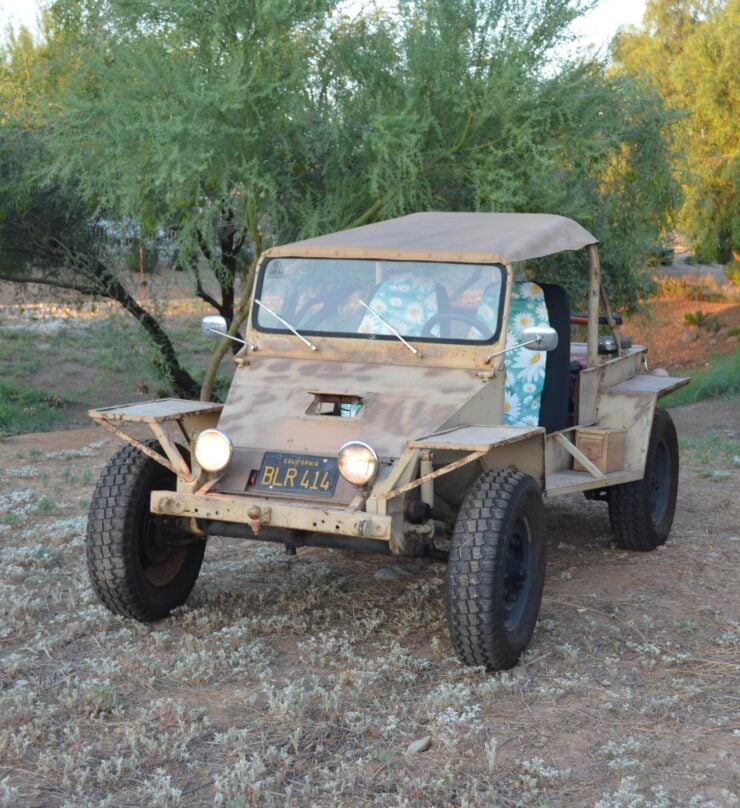
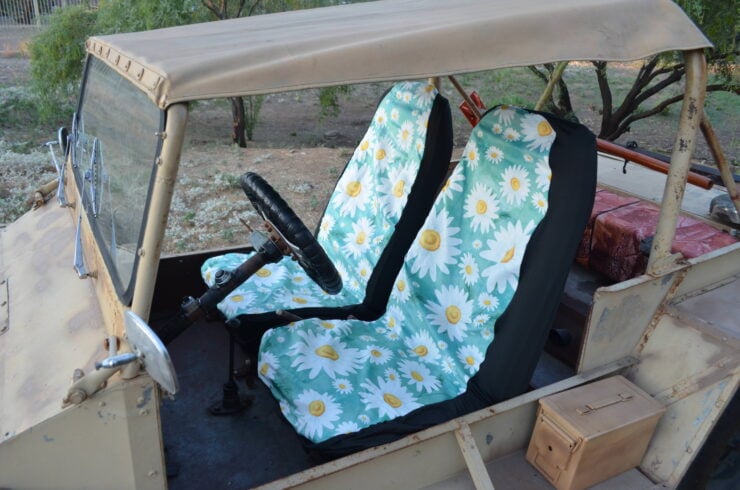
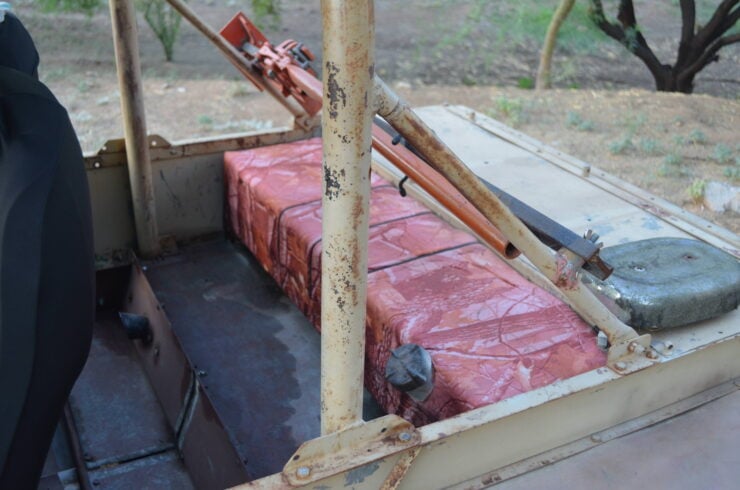
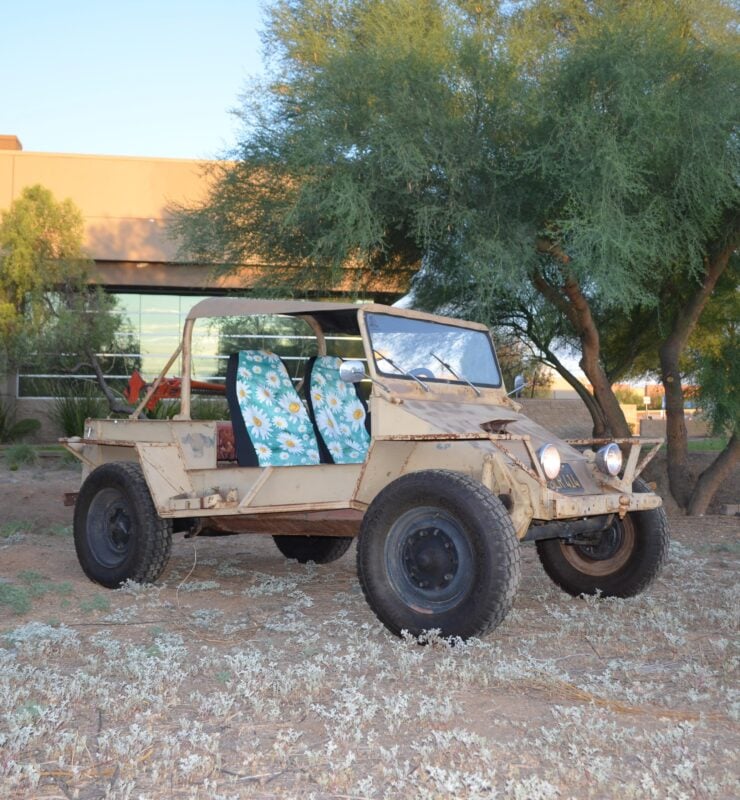
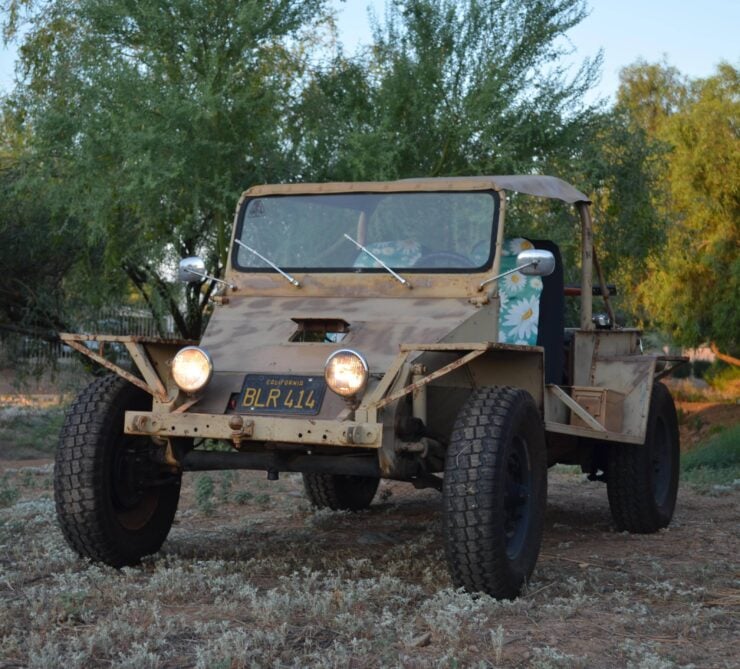
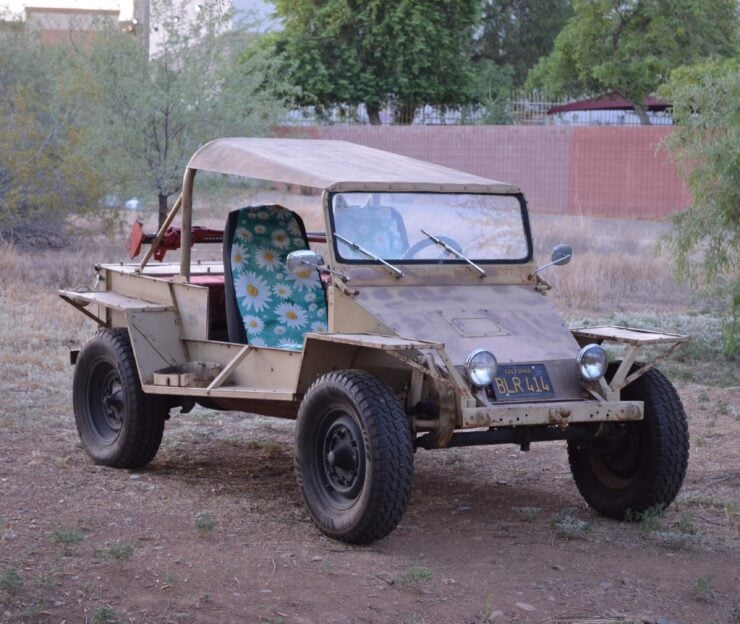
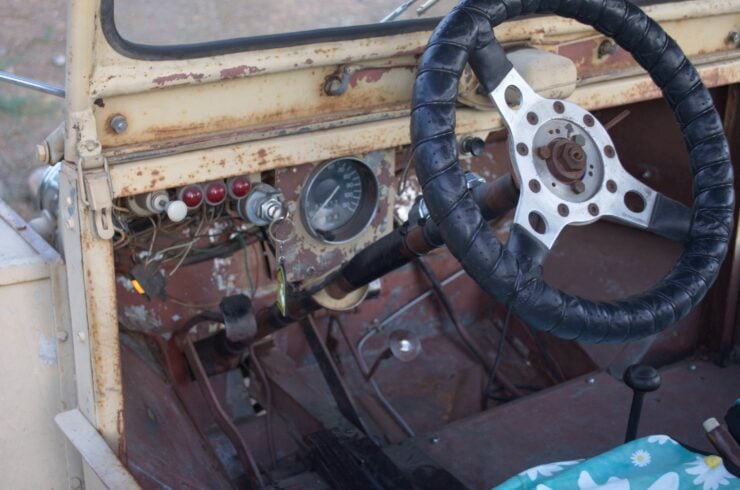
Images courtesy of Bonhams

